The Controversy of Clipping Pet Birds' Wings
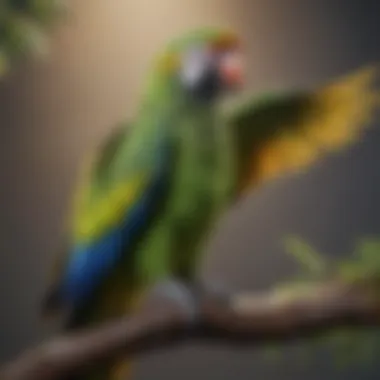
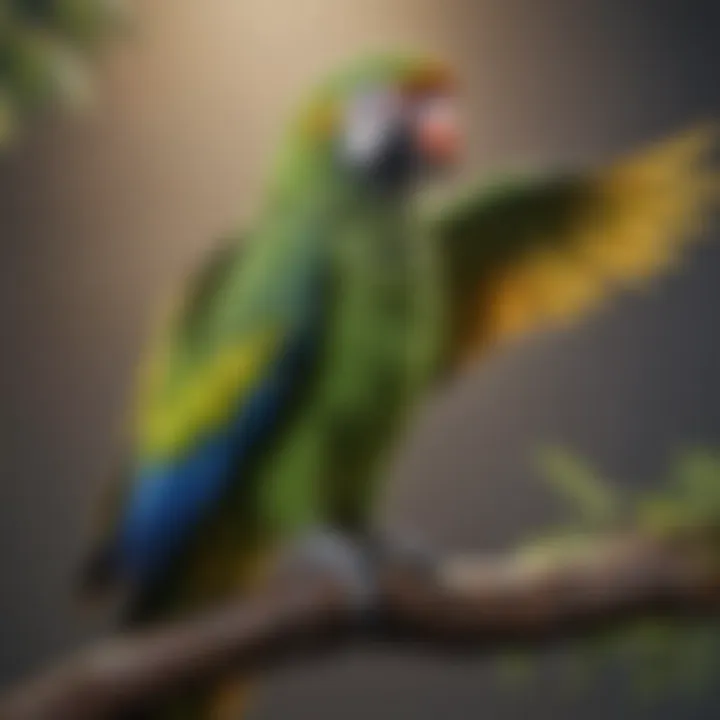
Intro
Clipping the wings of pet birds remains a debated subject among bird owners and avian specialists alike. This practice, often seen as a method to enhance safety, raises various concerns regarding a bird's well-being, behavior, and capacity for flight. It is essential to navigate this topic with a clear understanding of the methodologies involved, as well as the potential consequences for the pet.
Understanding the pros and cons of wing clipping can empower bird owners to make informed decisions. The implications extend beyond mere aesthetics; they touch upon the bird's health, freedom, and ability to engage with its environment. It will be helpful to examine the topic closely to discern how best to care for pet birds, balancing safety with their natural instincts.
In this article, various aspects of the wing clipping controversy will be explored. We will discuss care tips, behavioral insights, dietary needs, health and wellness considerations, and ways to provide enrichment for birds, ensuring a comprehensive roadmap is presented for responsible ownership.
Understanding Wing Clipping
Wing clipping is a practice that stirs significant debate among bird owners and avian experts. Grasping the details surrounding this subject is necessary for anyone who interacts with pet birds. This section outlines its definition and historical background, offering context for the ongoing discussions about its necessity and ethics.
Definition and Purpose
Wing clipping is the act of trimming a bird's primary feathers. The purpose mostly revolves around mitigating the risk of injury that can arise from unrestricted flight. When pet birds, like parakeets or cockatiels, are allowed to fly freely, they can encounter hazards such as windows, mirrors, or ceiling fans. Clipping helps reduce these risks. However, it is not without its own controversies. Some owners believe that restricting flight capabilities might hinder the bird’s natural behavior, affecting its mental health and overall well-being. Thus, understanding the definition of wing clipping also implies considering the intended purpose behind it and its broader implications for avian care.
Historical Context
Historically, clipping wings has origins in domestic practices. Ancient civilizations realized that domesticated birds required protection from potential dangers in their environment. Over time, this practice became more common, particularly among new pet owners who might not be fully aware of the complexities involved with birds' natural behaviors.
In the late 20th century, as more people began keeping birds as pets, the topic gained further visibility. Increased awareness about animal welfare and the psychological aspects of bird care prompted discussions about the ethics of wing clipping. Today, many advocates recommend considering non-invasive alternatives. As such, exploring the historical context sheds light on how societal views and practices evolve concerning pet ownership and animal rights.
"Understanding the nuances of wing clipping can lead to healthier and happier birds."
Both the definition and the history of wing clipping serve as a foundation for deeper investigation into its implications. As bird owners, being educated about this practice enables more responsible decisions related to pet care.
The Anatomy of a Bird's Wing
Understanding the anatomy of a bird's wing is essential for comprehending the implications of wing clipping. Wings are not just tools for flying; they play a vital role in a bird's overall health and behavior. The wing structure comprises various feather types, muscles, and bones, which work together to facilitate flight and movement. Each component has specific functions that contribute to a bird's agility, balance, and ability to escape from danger. It is critical for bird owners to grasp these aspects to make informed decisions regarding clipping, ensuring the well-being of their pets.
Feather Types and Functions
Bird wings are covered with different types of feathers, each serving a unique purpose. The primary feathers are the long, stiff ones at the wing's tip. These feathers are essential for flight, providing lift and thrust. Secondary feathers, found closer to the bird's body, assist in balance and maneuverability.
Other feathers, such as down feathers, provide insulation. They help keep birds warm in colder climates. Additionally, contour feathers help streamline the bird's body, improving aerodynamics while flying. The healthy condition of these feathers is crucial. Damage or loss from improper clipping can impair flight capabilities and overall well-being.
Musculoskeletal Structure
The musculoskeletal system of a bird's wing includes bones such as the humerus, radius, and ulna. These bones are lightweight yet strong, allowing birds to maintain their flight dynamics. The muscles attached to these bones enable complex movements during flight, including flapping and gliding.
The central location of the wing joints allows for a wide range of motion essential for accurate flight control. An understanding of this structure allows bird owners to appreciate how critical it is to retain both the feathers and underlying skeletal integrity during the clipping process. Misguided clipping can lead to physical injuries, making it important for owners to seek professional guidance if they decide to clip their pet's wings.
Reasons for Wing Clipping
Understanding the reasons behind wing clipping is crucial for any bird owner. Clipping a pet bird's wings is a widespread practice. It often emerges from a combination of concerns related to safety, behavioral tendencies, and the perceived need for control. While some owners advocate for wing clipping, others highlight the potential drawbacks. Recognizing the motivations for this practice can aid in making informed decisions about a bird's care and management.
Safety Concerns
One of the most common reasons for wing clipping centers around safety. Many pet owners fear that their birds will escape or injure themselves. For example, a bird that can fly may access dangerous areas within a home, like kitchens or open windows. By limiting flight, owners hope to prevent accidents such as collisions with household items or falls from heights.
Additionally, untrained birds may not navigate their environment safely. In homes with large windows or balconies, a bird in flight could perceive reflections as escape routes, leading to potential injury. Thus, clipping can be seen as a way to safeguard a bird’s physical well-being.
These safety concerns are not unfounded. Many birds, especially cockatiels and parakeets, can fly surprisingly well. Monitoring their movements in a busy family environment can become challenging. Therefore, reducing their ability to gain altitude can appear as the best option to ensure that the risks stay low.
Behavioral Control
The second significant reason for wing clipping relates to behavioral control. Birds are naturally active. For pet owners, clipped wings can mean fewer behavioral issues associated with excess energy. Owners often believe that limiting their pet’s ability to fly can help prevent destructive behaviors, such as chewing on furniture or incessant vocalizations.
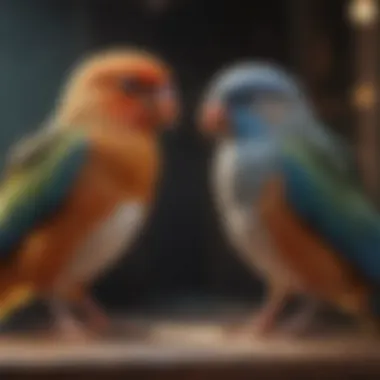
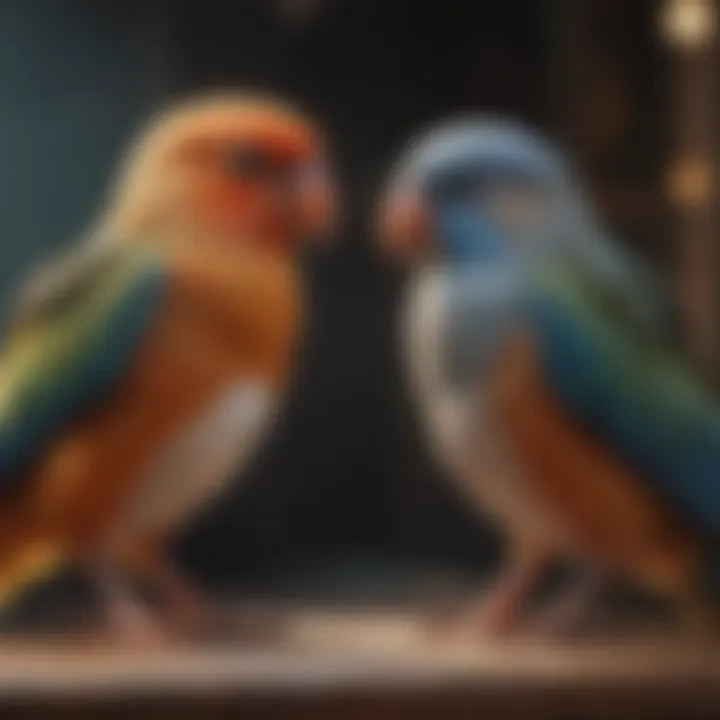
This belief ties into the idea that birds require stimulation to remain calm and content. While wing clipping may offer immediate control over a bird’s movements, it does send a message that the owner desires a particular behavior. Safe environments and mental stimulation are essential for proper bird behavior, yet clipping is often viewed as an easy fix.
Some owners advocate for enhancing the environment instead of clipping, but behavioral control is a persuasive argument for many. The key is to recognize the balance between control and the natural instincts of birds. Clipping may provide temporary relief from difficult behaviors, but it may overlook the need for proper care and interaction.
In summary, reasons for wing clipping often revolve around safety and behavior. While practicality suggests clipping can mitigate risks and manage unwanted behaviors, these actions can impact the overall well-being of the bird. Understanding these motivations provides a necessary framework as we delve deeper into this complex controversy.
Methods of Wing Clipping
Understanding the methods of wing clipping is crucial for bird owners looking to weigh the advantages and potential drawbacks of the practice. These methods can greatly influence both the outcome and the well-being of the pet bird. Proper techniques can mitigate some risks associated with clipping while enhancing the overall safety and health of the bird. It is important to recognize that not all birds respond the same way to wing clipping, which makes familiarity with various techniques essential.
Professional Techniques
Engaging a professional for wing clipping can provide peace of mind to bird owners. Professionals typically include avian veterinarians and experienced groomers. They possess the skills necessary to perform the procedure with care and precision.
Common professional techniques involve the following:
- Identification of Appropriate Feathers: Professionals can identify which feathers to clip for maximum safety. They often target the primary flight feathers, the largest ones that are crucial for sustained flight.
- Tools Used: Usually, professionals use specialized scissors or clippers designed for birds. This ensures a clean, precise cut, minimizing stress for the bird and the risk of injury.
- Careful Handling: Experienced individuals know how to handle birds properly during the process. They use gentle restraint to prevent unnecessary anxiety, ensuring the bird feels secure.
- Observation of Bird’s Response: Professionals monitor the bird’s behavior closely throughout the process. If a bird shows extreme distress, they may choose to stop and reassess the situation, prioritizing the animal’s well-being.
"When performed by a trained professional, wing clipping can be a safe and effective way to manage pet birds' flying behavior."
At-Home Approaches
Some bird owners may choose to perform wing clipping at home, either for convenience or cost-saving purposes. This approach can be more challenging and should be approached with caution. Those considering this method need to educate themselves thoroughly before proceeding.
Key elements to consider with at-home approaches include:
- Research and Training: It is vital to read comprehensive materials or consult with a veterinarian prior to attempting clipping. Online resources like Wikipedia and forums such as Reddit can be very useful for advice and shared experiences.
- Proper Tools: Bird owners should invest in high-quality grooming scissors or clippers specifically made for birds. Dull tools can lead to ripping, causing pain and discomfort.
- Calm Environment: Creating a tranquil space is essential. Minimizing distractions and noises will help keep the bird calm during the clipping session. Some owners find that performing the clip during the bird's familiar routine can be helpful.
- Execution of Clipping: Owners must gently restrain the bird with one hand, ensuring it feels secure without causing panic. With the other hand, they can carefully clip the designated feathers, making sure to avoid cutting too close to the skin to prevent injury.
- Post-Clipping Care: After clipping, monitor the bird for signs of distress or unusual behavior. Ensure the bird has a safe, comfortable space to adjust to its new ability to fly.
In summary, understanding the methods of wing clipping—whether professional or at-home—is essential for responsible bird ownership. The choice between these methods should consider the bird’s specific needs and the owner’s experience and comfort level.
Potential Risks and Complications
The discussion surrounding the clipping of pet birds' wings involves a range of potential risks and complications. Understanding these factors is crucial for bird owners who wish to make informed choices about their pets' care. The ramifications can be both physical and emotional for the birds involved. Here, we will explore these elements thoroughly.
Physical Injuries
Clipping a bird’s wings is not without its physical risks. This procedure involves cutting primary feathers which are essential for flight. If done improperly, it can lead to various injuries. For instance, if the wings get clipped too short, this can result in bleeding if the quick is hit. The quick is a vital part of the feather and extends into the skin, making it delicate to cut.
In addition, after being clipped, birds can still attempt to fly or jump, which may lead to accidents such as crashing into walls or furniture. Such incidents can result in sprains, fractures, or even more severe trauma. Birds are creatures that rely heavily on their wings for balance and movement, making any disbalance a significant potential concern.
It's important for owners considering wing clipping to weigh these risks. Proper consultations with avian veterinarians before proceeding can help understand how to minimize these hazards. If physical injury occurs, immediate medical attention may be necessary to address any complications.
Emotional Impact
The emotional well-being of birds is just as significant as their physical health. Clipping their wings can alter their behavior and how they relate to their environment. Birds are inherently flighty creatures, and losing their ability to fly can lead to a sense of frustration and anxiety.
Some birds may become more aggressive or exhibit signs of distress after being clipped. This change in behavior can stem from the loss of freedom and autonomy that flight provides. It is also possible for clipped birds to develop a decreased level of social interaction with their owners, stemming from stress and confusion induced by the procedure.
The emotional impact can vary significantly depending on the individual bird's temperament and personality. Owners must observe changes in behavior closely after clipping, as these may be indicators of stress or discomfort. Providing a stable, enriched environment can help alleviate some emotional strain, but it does not address the root issue of clipping.
"The psychological welfare of birds should be prioritized alongside their physical health. A happy bird equals a healthy bird."
Alternatives to Wing Clipping
The debate surrounding the clipping of pet birds' wings highlights an essential aspect of avian care: the need for alternatives that prioritize both safety and the natural behaviors of birds. The practice of wing clipping raises ethical questions and concerns about bird welfare. Therefore, exploring alternatives is crucial. These alternatives not only help secure the living environment for pet birds but also promote their overall wellbeing.
Flying Restrictions Through Environment Design
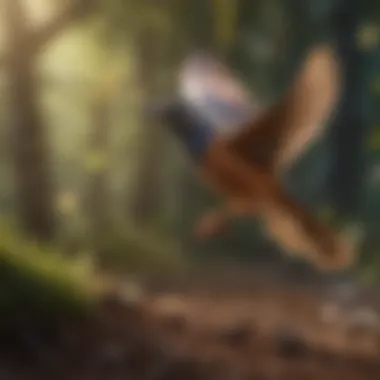
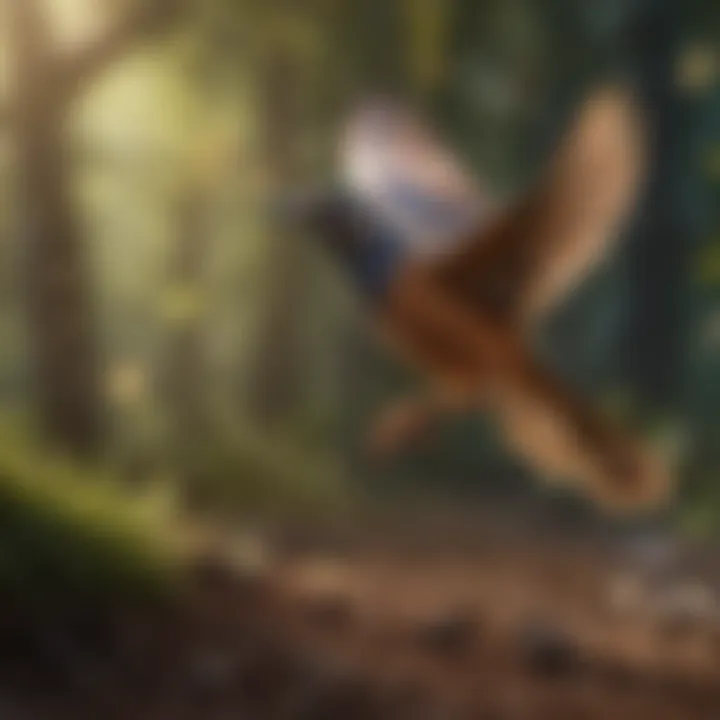
One effective method to restrict flights without needing to clip wings involves carefully designing the bird's environment. By modifying the space where pet birds reside, owners can create a safe and stimulating habitat that limits the risk of dangerous flights.
- Cage Setup: Invest in a spacious cage that allows birds to move freely but prevents them from flying into hazardous areas, such as stairs or breakable items. The dimensions of the cage matter, as larger cages encourage movement while minimizing accidental flights.
- Strategic Placement of Perches: Position perches close to the cage walls or near safe landing spots. This reduces the chances of birds attempting to fly long distances, which can lead to collisions and subsequent injuries.
- Barrier Installations: Consider using nets to block off areas where flying could pose a risk. This gives birds a designated flight area while ensuring they cannot venture into dangerous zones.
- Use of Toys: Provide engaging toys in specific areas to attract birds to specific locations without encouraging them to fly across the room. This focus helps prevent erratic flight behavior.
- Supervised Out-of-Cage Time: Allow pet birds supervised time outside their cages in a secure environment. This combines their need for space with safety, as the owner can control potential dangers.
Training for Safe Interactions
An additional way to manage a bird's flying behavior responsibly is through training techniques that foster safe interactions between the bird and its human companions. This approach requires patience and consistency.
- Recall Training: Teach birds to respond to specific cues, which can help direct them safely back to their cage or landing area after flight. This can be accomplished using verbal commands or visual signals like a specific hand gesture.
- Use of Treats: Positive reinforcement can be highly effective. Reward birds with treats when they land on a designated perch or return to the owner's hand, encouraging safer behaviors through association.
- Gradual Exposure to Environments: Slowly introduce the bird to new areas and situations while monitoring their reactions. This can help them understand which spaces are safe and which ones to avoid.
- Consistent Routines: Forming a daily routine helps in establishing predictability, making birds feel secure and less likely to attempt flight during confusing moments.
- Patient Interaction: Spend time drenching birds in affection through gentle handling and soft avian communication. Building trust can influence their flight response positively.
In summary, creating a safe and nurturing environment for pet birds is paramount to their health and happiness. By employing sound environmental design and incorporating training methods, bird owners can ensure their pets remain secure without the need for wing clipping. This approach emphasizes the species' natural behaviors, supporting their overall well-being while addressing safety concerns.
Legal and Ethical Considerations
The debate regarding the clipping of pet birds' wings extends beyond mere practicality and touches upon significant legal and ethical dimensions. Understanding these elements is crucial for bird owners who wish to navigate this sensitive issue with care and responsibility. Legal considerations often involve the welfare laws already in place, whereas ethical concerns encompass the moral obligations that pet owners have towards their birds. This section aims to provide clear insights into both areas, ensuring that bird owners are well-informed about their responsibilities and the implications of their decisions.
Animal Welfare Laws
Animal welfare laws are designed to protect pets from mistreatment, ensuring they receive proper care and sufficient freedom to express their natural behaviors. In the context of wing clipping, these laws may vary by region, impacting what is permissible. Many jurisdictions classify certain practices, such as excessive wing clipping, under cruelty or neglect, especially when the bird's ability to fly is critically hindered.
Bird owners should familiarize themselves with their local laws regarding pet birds. Some regions have specific regulations concerning the treatment of birds, including limitations on how much of a bird’s wing can be clipped. Not adhering to these laws may not only lead to legal repercussions but could also result in the loss of the bird's well-being.
"Understanding animal welfare laws is not just about compliance; it is about respect for the life and well-being of sentient beings."
Ethical Ownership Practices
Ethical ownership practices require bird owners to act in a manner that prioritizes the physical and emotional health of their pets. This entails understanding the implications of wing clipping and assessing whether the procedure genuinely meets the bird's needs or the owner's convenience. Wing clipping can drastically alter a bird's behavior and its relationship with its environment. The ethical approach would advocate for exploring alternatives, such as modifying the living space to ensure safety without resorting to clipping.
Considerations for ethical ownership may include:
- Assessing Risk vs. Benefit: Owners must critically evaluate whether clipping helps mitigate real safety risks or merely reflects superficial control.
- Informed Decision-Making: Consulting with avian veterinarians or specialists before making decisions concerning clipping ensures the owner understands the potential consequences.
- Promoting Natural Behavior: Encouraging natural flying and foraging behaviors in a safe environment is key. Bird owners should strive to achieve a balance between safety and the bird’s innate needs.
Ultimately, embracing ethical practices not only aids in the bird's quality of life but also fosters a deeper bond between the pet and the owner. Understanding the intricate interplay of legal and ethical considerations helps bird owners make better choices that respect the lives they are responsible for.
Understanding Bird Behavior Post-Clipping
Understanding bird behavior following wing clipping is crucial for bird owners. The adaptations that birds make, after their wings are clipped, can illuminate their emotional states, relationship with human caretakers, and their engagement in daily activities. This section explores how birds adjust to the physical changes, and the social interactions that shift as a result of wing clipping.
Post-Clipping Adaptations
After the wings of a pet bird are clipped, several distinct adaptations can be observed. Birds may initially display signs of confusion or distress. They might hesitate to fly or navigate their environment as they often do. This period of adjustment varies among individuals but tends to highlight their instinctual responses to modified mobility.
Behavioral changes include:
- Increased reliance on climbing and walking rather than flying.
- Exploration of lower perches, which may seem safer compared to flight.
- Altered interaction with owners or other pets, possibly leading to behavioral issues.
Over time, many birds learn to compensate. They can adapt their daily routines to their new physical limitations. However, this adjustment can vary based on the bird’s personality and prior experiences with flight. For some, the lack of aerial freedom can lead to increased stress or frustration.
"Adaptation is not simply a physical response; it encompasses emotional and psychological changes as well."
Social Dynamics Changes
Clipping a bird's wings does not only affect its physical capabilities; social dynamics can shift as well. Behavior towards other pets and humans may change, impacting their social bonding. Birds are social creatures and alterations in their ability to fly can alter their interactions.
Possible changes in social dynamics include:
- Increased aggression or fear if the bird feels vulnerable without flight.
- More dependence on human caretakers for comfort and security.
- Changes in flock hierarchy, where a clipped bird may experience a shift in its social standing among other pets.
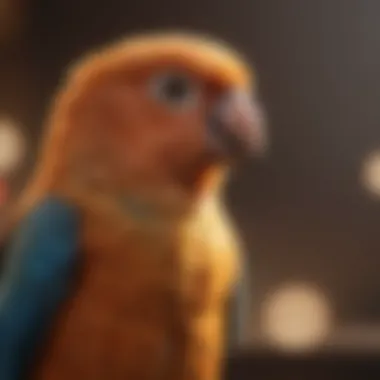
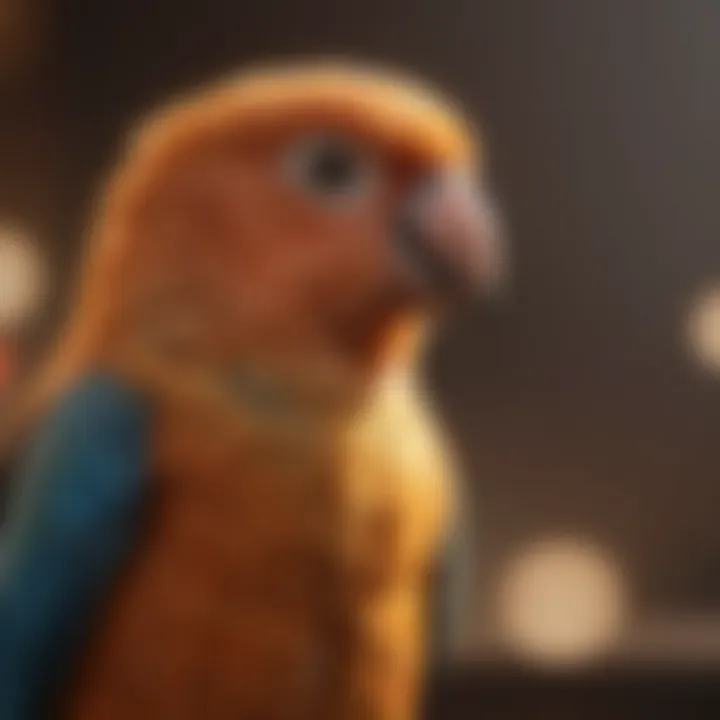
Birds may also seek out human interaction more actively. Those that appreciated flying may show signs of frustration if they cannot engage in it post-clipping. Owners might need to reassess their interactions to ensure their pet maintains a healthy social and emotional state.
The Role of Veterinary Guidance
In the realm of caring for pet birds, the involvement of veterinary professionals becomes crucial, particularly when it comes to the sensitive topic of wing clipping. Given the ramifications this procedure can have on a bird's physiology and behavior, informed guidance from a veterinarian is invaluable. Not only do vets possess the expertise to perform wing clipping safely, but they can also provide advice tailored to the specific needs of individual species and even the behavioral characteristics of the individual bird. This personalized approach is vital as it helps ensure that decisions made align with both the birds' well-being and the owners' safety concerns.
Consultation Importance
Consultation with a veterinarian should commence well before any procedures are undertaken. A thorough evaluation aids in determining the potential necessity of clipping a bird's wings. For instance, some species may require it more than others, based on their natural behaviors and environment. Furthermore, discussing the implications of wing clipping allows owners to weigh the associated risks and benefits clearly.
During consultations, owners can also inquire about various clipping techniques. Different methods might lead to varying levels of stress for the bird. Addressing these questions with a knowledgeable person can greatly affect the approach an owner decides to take.
Aftercare Recommendations
Post-clipping care is equally important as the procedure itself. A vet can offer specific aftercare instructions, helping to minimize any potential stress or discomfort. This might include tips on monitoring flight abilities, recognizing signs of stress, and ensuring the bird's environment is safe and enriching as they adjust. Additionally, discussing behavioral changes and how to support the bird’s emotional health post-clipping can lead to a smoother transition.
"Veterinary guidance ensures that the well-being of the bird is paramount in any decision made by the owner."
The End and Best Practices
In the complex discourse surrounding clipping pet birds' wings, it is crucial to draw together the key points discussed throughout this article. Understanding the implications of this practice is essential for informed ownership and care of pet birds. The balance between ensuring safety and allowing natural behaviors goes to the heart of the controversy. Ultimately, the decision to clip a bird's wings should not be made lightly. Consideration must be given to the specific bird, its environment, and the owner's ability to provide adequate care and supervision.
Summarizing Key Insights
The debate on wing clipping is multifaceted. Several insights emerge:
- Safety Concerns: Owners often resort to clipping wings as a method to prevent injury and accidents within the home environment.
- Behavioral Management: Clipping may also be viewed as a tool for controlling undesirable behaviors like excessive flight or aggressive tendencies.
- Physical and Emotional Risks: There are inherent risks in wing clipping, including potential physical injuries and notable emotional stress for the bird.
- Alternatives: Alternatives exist that allow for safety without clipping, such as environmental modifications and ongoing training. Bird owners can create a safe space where their pets can thrive without compromising their ability to fly.
Ultimately, pet bird ownership demands a commitment to ongoing learning and adaptation to individual birds' needs and behaviors. Ensuring the well-being of these creatures requires a broad understanding of their behavior, anatomy, and emotional requirements.
Recommendations for Bird Owners
For those considering wing clipping, here are several recommendations that can guide your decision:
- Consult a Veterinarian: Always seek professional advice before making significant decisions like wing clipping. Understanding your bird's specific needs is essential.
- Educate Yourself: Read up on avian behavior and health. Resources from websites like Wikipedia, Britannica, or discussions on forums such as Reddit can provide valuable insights.
- Evaluate Alternatives: Before proceeding with clipping, explore various options that promote safety while preserving flight abilities. Setting up safe environments can significantly reduce the need for clipping.
- Monitor Behavior: After any intervention, closely monitor your bird's reactions and behaviors. Changes can signal the need for further adjustments in care strategies.
- Engage in Training: Invest time in training exercises that encourage safe interaction. Positive reinforcement methods can cultivate trust and better behavior without physical intervention.
In summary, being a responsible bird owner hinges on understanding the multiple dimensions of wing clipping. Decisions must prioritize the physical and emotional well-being of your pet. Each bird is unique, and their care should reflect that individuality.
Resources for Further Reading
When delving into the topic of clipping pet birds' wings, it is essential to gather varied resources that provide depth and understanding. Resources for further reading serve as a foundation for pet bird owners, breeders, and aspiring bird parents to make informed decisions about their feathered companions. This section aims to highlight key elements that make such resources valuable, as well as considerations for engaging with them effectively.
Accessing a diverse range of literature and studies contributes to a well-rounded view of wing clipping practices. One significant aspect is improving one's overall comprehension of avian health and behavior. Understanding the implications of clipping allows owners to balance safety concerns with the emotional and physical repercussions on their birds.
Additionally, these resources can offer evidence-based insights on alternative methods for managing bird safety without resorting to wing clipping. This knowledge fosters a well-informed community that can discuss and share best practices based on real-life experiences and research findings.
Lastly, reading facilitates staying updated on evolving animal welfare laws and ethical ownership practices. As society progresses, the discussion surrounding bird care continues to evolve, necessitating an awareness of the current standards and recommendations.
"Knowledge is the key to responsible bird ownership and welfare."
Recommended Books
Books can provide comprehensive information and varied perspectives on the topic. Some notable recommendations include:
- The Bird Behavior Book by Dr. David H. H. Stark: This publication addresses aspects of bird behavior, including the impact of wing clipping.
- The Complete Guide to Pet Bird Care by Dr. Linda M. M. Doe: This text offers practical care advice along with insights about bird health and safety.
- Winged Companions: Understanding Parrots' Needs by Jennifer Kay: It discusses different ways to keep pet birds safe that may not involve wing clipping.
These books enrich readers' knowledge and help bridge the gap between veterinary advice and practical care.
Online Articles and Studies
Online articles and academic studies are crucial for keeping up with the latest information and research findings. Several useful resources include:
- Wikipedia's Avian Care section: Offers a broad overview of bird care, including clipping practices and alternatives.
- Britannica's Bird Behavior articles: These provide insights into how birds behave in various contexts, helping owners understand their pets better.
- Reddit forums, especially those focused on avian enthusiasts, can be valuable for real-time discussions and shared experiences.
Exploring these online resources allows readers to engage with an active community while also accessing scholarly works that cover the subject in greater detail.















